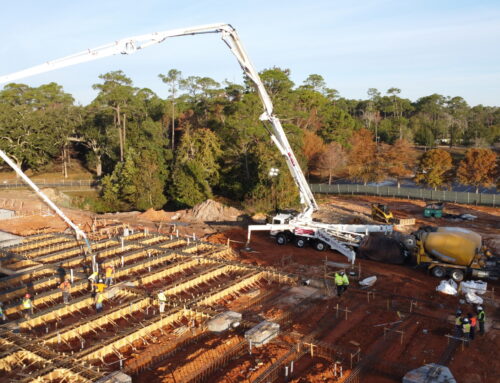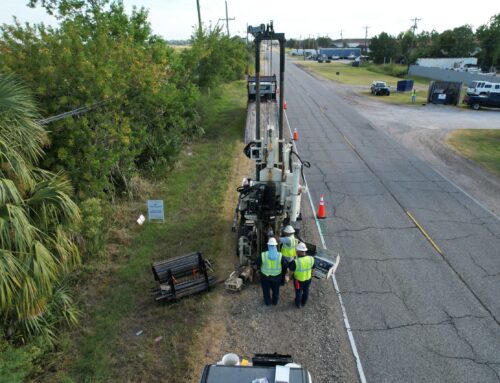LAFAYETTE REGIONAL AIRPORT
Eustis Engineering’s Scott office recently completed a 1,300-hour project at the Lafayette Regional Airport. Alex Brochard, P.E., provided more than 250 hours of engineering effort on the project which had continued for more than a year. A. J. Campbell and Julius Ivery of the Drilling Department in Metairie each spent more than 150 hours on the project providing drilling services.
On 11 August 2016, Eustis Engineering officially contracted with the project engineering design team as the geotechnical subconsultant for the proposed Lafayette Terminal Program Validation project at Lafayette Regional Airport. Initial design upgrades included a new two-story terminal building, a two to four-story parking garage, and rehabilitation and expansion of the landside parking pavements and airside apron pavements.
The geotechnical engineering scope of services included evaluation of the site’s subsurface conditions to evaluate the feasibility for both shallow and deep foundation options to support the proposed structures. Analyses were also performed to evaluate time-rate consolidation settlement, elastic settlement, and settlement induced by fill placement. Recommendations were made regarding estimated modulus of subgrade reaction (k), CBR values, and resilient modulus for proposed landside and airside pavements. In addition, testing was performed to evaluate the site for in situ soil properties regarding potential shrink/swell and soil corrosivity. Construction recommendations regarding site preparation, drainage, and placement and compaction of fill were also provided.
Obstacles presented during the field exploration phase of work included: scheduling and coordination of nighttime tasks within various operational regions inside the airport premises; development and approval of weekly schedules to ensure access was gained; and precision flight schedule monitoring and communication with Airport Operations. Field operation scheduling was established using WAN requests issued by Eustis Engineering to Operations one week in advance of initializing the work. Field staff awareness of “movement” and “non-movement” zones was also critical to ensure potential conflicts were avoided within moving and stationed aircraft zones.
Foundation recommendations were made for the project. Allowable bearing capacities, for various sizes of shallow continuous and isolated square footings, were given with respective settlement estimates. This option was provided should the structures be capable of accommodating potential vertical movements. As an alternative, deep foundations, consisting of drilled shafts and driven or augercast piles, were also provided.
For more information and an updated Lafayette Regional Airport Guide, please visit Lafayette Regional Airport - LFT Airport (lafayette-airport.com)
PHOTO COURTESY LAFAYETTE REGIONAL AIRPORT




